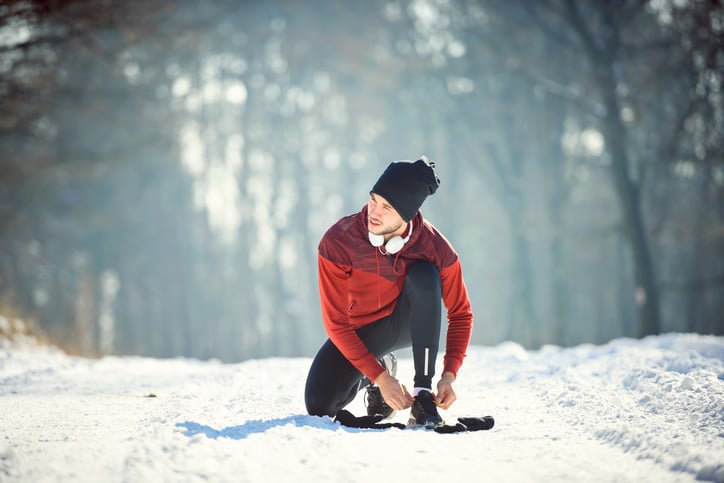
When done safely, a winter run is actually pretty good for you. St. Mary’s University researchers revealed a winter run requires less energy and could bring your heart rate down by 6 percent. They also concluded your best chance to set a personal record may be when the mercury takes a nosedive.
But you, or your athletes, don’t want to end up in the emergency department either. So, if you love to lace ‘em up every time the temperature goes down, consider these five safety tips for a winter run and share them with your athletes.
Safety Tip 1: Warm Up
It sounds like a no-brainer, but think about all the times you were in a hurry and did not warm up properly before a run, or even at all. You may get away with it on a hot summer day, but old man winter won’t have it. When it’s cold outside, dynamic stretching works best before a winter run. You also can get your blood flowing by doing things like:
- running up and down stairs
- jumping rope
- elliptical
Most research suggests you won’t damage your muscles in the cold. But if you stretch a cold muscle, you could strain it.
Safety Tip 2: Check the Temperature
How cold is too cold? While there are some dangers to working out in the extreme cold, studies suggest that exercise can be done safely in wind chill temperatures as low as -18 degrees F.
Wind chill takes into account conditions like wind speed and moisture to calculate the risk of frostbite to your bare skin. Running in extreme cold also may trigger symptoms of exercise-induced asthma.
Safety Tip 3: Dress Properly
Yes, it’s cold. A good rule of thumb when you go on a winter run is to dress like it’s 20 degrees warmer. This will prevent you from putting on too many layers.
Your base layer should be a wicking material and covered by an insulating layer of fleece, synthetics or wool. Top it with an outer wind-breaking layer. Mittens are typically better than gloves because your fingers generate more heat when they're not separated from each other by fabric. It’s also important to keep your feet dry as well and wear a facemask or a hat in extreme cold.
Safety Tip 4: Stay Hydrated
Overdressing for a winter run could lead to dehydration during winter runs. Or you may sweat less and feel less thirsty, so you’re more likely to neglect your hydration needs.
You hear about it all the time in summer: Hydrate before, during and after your run. You need to take the same approach for your winter runs, too.
Safety Tip 5: Check Your Path
If the roads and sidewalks around your house are not plowed, or clear—you may want to avoid them. If the surface is wet, icy or snow-covered, you’re increasing your risk for injury.
If you do choose to go on a winter run on the snow—slow down. You’ll get all the benefits of a longer run.
You also may consider wearing a trail shoe because you don’t want to slip and twist a knee, or land on an elbow.
No one wants their athletes to get out of shape, so if they’re willing to run in the elements, they should. But make sure you’re prepared, just in case someone slips and falls. Take along a can of Instant Ice topical skin refrigerant on your winter runs. It’s a safe and effective way to treat bumps and bruises immediately. It can even be applied through your clothing on a cold winter day. Try some today.






